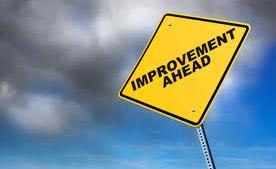
Three Key Ways to Improve at Chess (part 3)
In my past articles "Three Key Ways to Improve at Chess (part 1)" and "Part 2" I listed the three key methods of improvement that all chess players striving to get better should focus on:
1. Take in as much information about chess as possible (Learning)
2. Have a plan of action in every position in your games (Planning)
3. Practice, practice, practice tactics (Tactics)
The first two articles dealt with parts 1 and 2 of that list and this article will deal with the final part 3:
"Practice, practice, practice tactics" (Tactics)
This is a key method of improvement because it is important that we are strong tactically. With my students at NextLevelChessCoaching.com, I like to structure my lesson plans so that they are split between studying the planning process ("Three Key Ways to Improve at Chess (part 2)") and studying tactics. This is because I feel that even if we have all the knowledge in the world and have the best planned moves, it will not matter if we miss tactics during the game. We must be sharp tactically or else we will never become a strong player. This is especially important at lower levels where many games are decided by simple tactics: pins, skewers, forks, double attacks, two-move checkmates, etc. At higher levels these tactics become more difficult to see: clearance, deflection, desperado, interference, overloading, removal of the defender, etc. For a list of definitions and examples of each of these tactics, and more, read this Chess.com article: "Chess Tactics - Definitions and Examples". Knowing more of these tactical patterns will allow you to see more options in your own games and will definitely help you to improve your overall game.
Now, even though we know that tactics are important in chess, you may wonder "How do I know when there is a possible tactic in my game? What should I look for? What prevents me from finding the winning tactic more often?" Well, this goes back to our thinking process in chess. I will discuss the thinking process more in-depth in a future article, but one of the first steps in the thinking process is to "consider the forcing moves". This phrase should be drilled into your head. Forcing moves are the checks, captures and threats that are possible in a position. They are called forcing moves because they force the opponent to respond to them. Forcing moves are a big part of tactics in chess. Even if the forcing move looks ridiculous (for example: sacrificing your Queen for one pawn) it is still good to get into the habit of first considering ALL of the forcing moves that are possible. Sometimes considering the forcing moves first in a position will allow us to find tactics right away, rather than skipping over the idea because we didn't look at all of our options. Once we see options of forcing moves, we need to calculate each of them and see if they lead to anything positive. Let's look at an example:
First, we must look at all of the options we have for forcing moves:
-Nxc6
-Nxd7
-Nxf7
-Rxf7+
-Nxg6
-Nxd5
Now let's analyze each of these moves to see if there is a positive outcome:
-Nxc6 will be followed by Qxc6 and white is now down a piece and doesn't have a good follow-up. We can throw this idea out
-Nxd7 will be followed by Bxd7 and there is not an immediately forcing follow-up. This may be a possible move to make, but let's analyze the other forcing options first
-Nxf7 will be followed by Rxf7. We can then play Rxf7+ Kxf7, Qxh6. This may be a possible series of moves, but we would need to analyze it further to see if our compensation for being down a piece is worth it
-Rxf7+ will be followed by Rxf7. Now we have a new forcing move available to us: Qxh6+! Black would take our Queen with Kxh6 and then we play Nxf7+ followed by Nxd6. We would finish being up 2 pawns in this position and have a great game at the same time. This is the option we would want to decide on because it wins us material immediately. We could calculate our other two forcing moves Nxg6 and Nxd5 as well, but Rxf7+ would be our primary move to end up playing in this position
So we see that by starting off considering the forcing moves in this position, we end up being able to find a nice sequence of moves that wins us two pawns for free. We didn't need to start looking for a plan because once we see that we can win material for free, that will be the correct plan the vast majority of the time.
The Importance of Themes and Patterns
Another thing that is important to work on when you want to improve your tactical ability is the themes and patterns that come up in tactical positions. There are many different tactical themes and patterns in chess involving all of the pieces (even the lowly pawn!) that should be studied.
One example if the back rank checkmate. We all know the basic set-up of the checkmate:
Now what if the King can run to an escape square such as g7? Then we would need a piece (such as a pawn or bishop) to defend that square:
Now what if the King is guarding the rook's entry square (e8 in these examples)? Then we would need to push the King back (while cutting off the escape square at the same time) before playing the checkmate:
So we see a pattern here. If the bishop can cut off the King's escape square and force him to stay on the back rank at the same time, then all we need to figure out is how to put the King in a position so that we can check the king with the bishop and force him back. Here is a puzzle featuring this pattern:
By considering the forcing moves (one of which is Qf8+), then we are able to recognize this previous pattern in the game and find the checkmate. Let's look at a bit tougher of an example and see if we can figure out the forcing move sequence to finish the game (warning: this one will be very tricky!):
In the above puzzle, looking at the forcing checks first is very important. If we had played played Bh3 (threatening mate) in the original position, then white would have been able to escape by playing Re3. Black still would have enjoyed a great position after trading rooks and winning a pawn, but he would have missed out on the chance to finish the game much quicker. By studying patterns such as the one above, we will be able to see more of the same ideas in different positions and may be able to see opporunities to win games much earlier. (For more information about patterns, read the 2nd half of my first article: "Three Key Ways to Improve at Chess (part 1)")
After reading this article about tactics, I hope that you'll be able to improve in your tactical ability. Remember: First look at the forcing moves in every position you see. Even if none of the forcing moves lead to anything, it is still good practice to do and will help our tactical and calculation abilities at the same time. This will lead to your overall improvement and hopefully raise your tactics trainer rating at the same time  Next article will focus on the "4-step thinking process" in chess. Stay tuned for that article!
Next article will focus on the "4-step thinking process" in chess. Stay tuned for that article!
Resources to help practice your tactics:
-Chess.com Tactics Trainer
-ChessTempo.com
Also, don't forget to check out NextLevelChessCoaching.com if you are interested in low-priced, quality online chess coaching that will accelerate your improvement!






